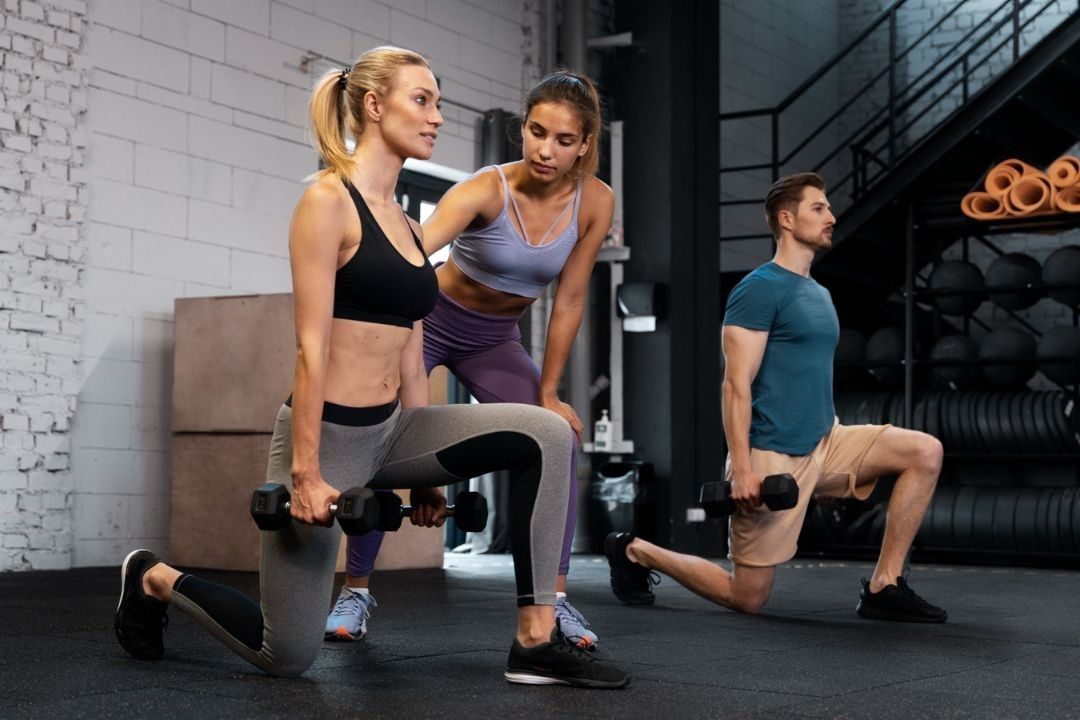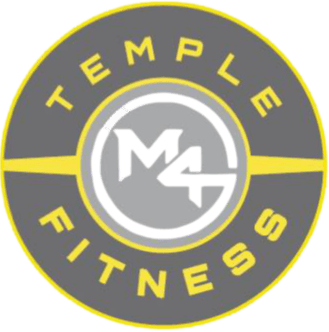Bodybuilding Vs. Functional Training: Which Suits Your Fitness Goal

Bodybuilding and functional training both have significant physical benefits. Selecting one between them depends on what you want to accomplish.
It can be challenging for beginners to distinguish between bodybuilding and functional training. Each type has advantages, though they are suited to different aspirations. Bodybuilding is about building muscle size and definition. On the other hand, functional training focuses on overall fitness and functional strength.
In this detailed comparison, we will help you identify which aligns better with your lifestyle and fitness journey.
What is Bodybuilding?
Bodybuilding concentrates on building muscle mass and crafting a perfectly defined body shape. It is achievable through exercises that focus on specific muscles. The endgame for bodybuilders revolves around achieving muscle symmetry and a visually impressive physique. People go through heavy weightlifting and strict nutritional discipline to accomplish this.
Bodybuilding is not just about getting strong. It is about looking muscular and powerful. It focuses on isolation exercises and heavy lifting. These exercises target specific muscles, like bicep curls, leg extensions, or triceps pushdowns. They will push your muscles to reach maximum growth.
What is Functional Training?
In contrast, functional training enhances your ability to perform day-to-day tasks. It mimics natural body actions, which enable excellent balance, coordination, flexibility, and strength. This strategy creates a body that functions and thrives in various physical scenarios.
Functional training focuses on more than just aesthetically pleasing looks. It concentrates on compound movements and flexibility exercises. Exercises like squatting, lunges, and planks target multiple muscle groups.
These exercises are great for performing real-world movements. They broaden your range of motion and help you function better. It makes you more efficient and less vulnerable to injury.
Bodybuilding Vs. Functional Training: Side-by-Side Comparison
| Aspect | Bodybuilding | Functional Training |
|---|---|---|
| Primary Goal | Muscle hypertrophy (size and definition) | Overall strength, flexibility, and movement fluidity |
| Focus Area | Specific muscle isolation | Full-body, compound movements |
| Training Equipment | Barbells, dumbbells, and machines | Kettlebells, resistance bands, medicine balls |
| Workout Structure | Muscle-group-specific routines (e.g., arms, legs) | Full-body sessions targeting various muscles |
| Workout Intensity | Heavy weights, low reps | Moderate weights, high reps |
| Injury Risk | Elevated risk due to muscle overuse | Lower risk, balanced muscle engagement |
| Training Frequency | Minimum 2-3 times weekly, isolating muscle groups | |
| Mobility & Flexibility | Less focus on flexibility | Enhances flexibility and balance |
| Ideal For | Building muscle mass, achieving symmetry | Improving general fitness, agility, and coordination |
Functional Training Vs. Bodybuilding: Key Differences
Here, we will describe the key differences between functional strength vs. bodybuilding for beginner fitness enthusiasts in Franklin. Let's look at them in depth:
1. Training Goals
The objective of bodybuilding centers around aesthetics and muscle hypertrophy. The primary mission here is to augment muscle size and proportion. Bodybuilders also prepare for competitions where attributes such as muscle size, symmetry, and definition are measured. This form of training targets isolated exercises. Each of them is aimed at shaping distinct muscle groups.
Functional training focuses on practical strength that benefits daily life. The goal is to master functional movements like pulling, pushing, and rotating. It aims to make everyday tasks like carrying heavy items or ascending stairs smoother and more efficient. Unlike bodybuilding, functional training prioritizes practicality. It focuses on coordination, agility, and balance over physical aesthetics.
2. Types of Workouts
Bodybuilding exercises emphasize muscle isolation. Here are some examples of these workouts:
● Bicep curls: It targets the biceps.
● Bench press: It builds chest strength.
● Leg extensions: This exercise focuses on the quadriceps.
● Lateral raises: It strengthens shoulders.
● Deadlift: It primarily focuses on the muscles of the back.
Functional training consists of various compound exercises. They focus on multiple muscles to work at once. Here are some examples:
● Crunches: It gives a toning effect and strengthens the abdominal muscles.
● Planks: It builds core strength and stability.
● Lunges: It aids in enhancing balance and leg strength.
● Glute Bridges: It targets legs and glutes and builds core strength.
3. Risk of Injury
Bodybuilders face a high risk of injuries from repetitive and isolated movements. Bodybuilding workouts can lead to injuries from too much muscle work. Exercises like lifting heavy weights without proper technique can result in serious issues. They can cause severe joint problems or muscle tears.
On the other hand, functional training is less prone to repetitive injuries due to its full-body engagement. However, it still carries risks if movements are performed improperly. It can happen in fast-paced workouts like kettlebell swings. Regardless, functional training emphasizes balance and harmony. So, it reduces the probability of injuries.
4. Progress Tracking
Bodybuilding focuses on hypertrophy and strength gains. It includes several measuring metrics, such as weight lifting, muscle size, and body composition. You can measure them and keep track of your strength and muscle growth. You can measure these changes using a measurement scale.
In contrast, functional physique improvements may not be as visibly noticeable. You can still track progress through functional tests, such as strength, balance, and flexibility. You can also measure mobility, speed, or ability to perform specific tasks. However, it is not easy because there is no scale to measure these transformations.
5. Time and Skill Requirements
Bodybuilding requires more time due to its focus on specific muscle groups and high-volume workouts. Lifters often spend countless hours weekly on isolation exercises. It requires a solid commitment to a structured routine. In terms of skills, bodybuilding only emphasizes mastering specific lifts and techniques.
Functional training, however, can be more time-efficient as it incorporates multijoint exercises. This approach requires less time per session while providing a comprehensive workout. However, skill-wise, it demands a broader range of movement abilities and fitness levels. It can be very hard for beginners.
6. Training Frequency and Volume
Bodybuilding and functional training have differences in workout frequency as well. Bodybuilders train each muscle group 1–2 times per week. They often follow a split routine to allow for adequate recovery and hypertrophy. This format means sessions can be longer, focusing on specific muscles.
On the other hand, functional training involves more frequent workouts, with multiple practitioners training 2–3 times weekly. You need at least one day of rest in between. Besides that, It targets various muscle groups in each session. This approach enhances overall fitness and functional capacity. It allows for mixed exercises that replicate real-life movements.
Which Should You Choose?
Here comes the part where you must decide on functional fitness vs weight lifting that suits your fitness goal. Both can impact your body and fitness. Consider the critical factors we have given below before selecting the perfect choice for yourself:
Consider Bodybuilding If:
● Your primary goal is enhancing muscle size and physical aesthetics.
● You want to look bigger and more powerful.
● You enjoy systematically tracking progress with measurable outcomes.
● You can commit to a generous amount of time.
● You can devote yourself to both rigorous workouts and a structured diet.
Go to Functional Training If:
● You aim to improve overall fitness.
● You want body mobility, flexibility, and strength.
● You desire to enhance your performance in everyday activities.
● You prefer dynamic, various workouts involving the entire body.
● You do not want any drastic and visible changes to your body.
● You can give less time to work out and practice.
Conclusion
Both bodybuilding and functional training offer distinct rewards. The perfect option will rely on individual desire and lifestyle in Franklin, TN.
Bodybuilding suits those aspiring for muscle gain and symmetry. On the other hand, functional training is ideal for people seeking to optimize overall fitness and daily performance. Your choice should align with your purposes and motivate you throughout your fitness journey.
Talk to a fitness trainer to choose the option that suits your desires. We can tell you which exercises are best for your body. Whatever the circumstances, it is never too late to be healthier, fit, and look the finest.
Frequently Asked Question
Can I combine bodybuilding and functional training?
Yes, you can. Combining bodybuilding with functional training can be an extremely efficient strategy to develop a well-rounded fitness routine. Incorporating functional activities into your bodybuilding regimen will help you enhance your athleticism and avoid injuries.
Which burns more calories: bodybuilding or functional training?
Functional training burns much more calories than bodybuilding because of full-body movements. Incorporating multiple joints and muscle movements indicates high fat-burning and better all-around fitness. However, bodybuilding also burns calories if done correctly.
Can functional training build muscle?
Yes, functional training can help grow muscle. While functional training activities are mainly about increased strength, endurance, and coordination, they can also promote muscle development. However, you should combine this training with an adequate diet and rest to gain muscle.



